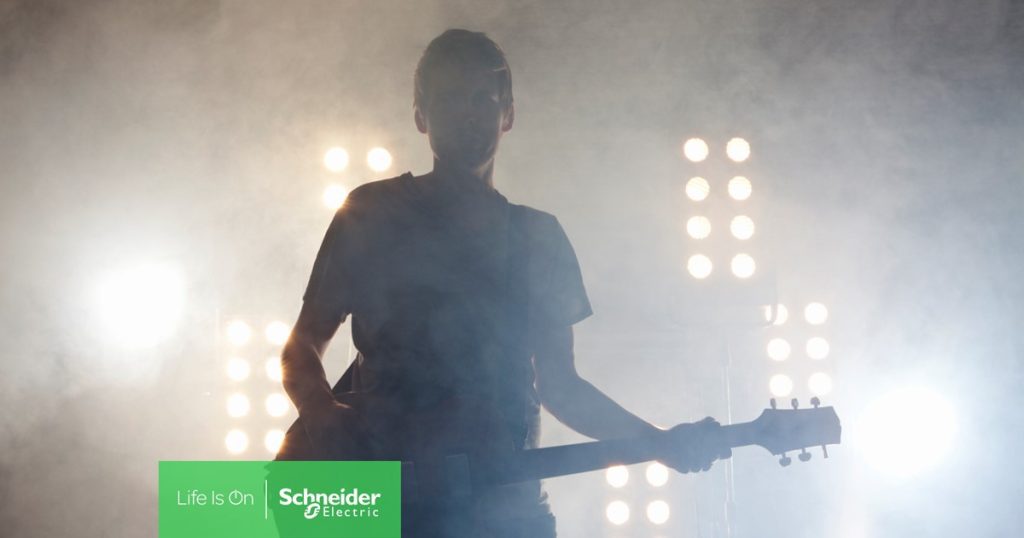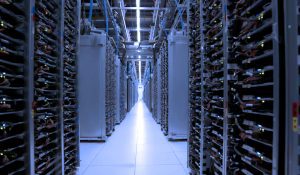During two jam-packed days at Data Centre World in London in March 2024, I spent most of the 48 hours engulfed in data center conversations, presentations, booth tours, press interviews, analyst briefings and debates—and I am including breakfast, lunch and dinner. Any time I was not sleeping (yes, I was nearly followed into the bathroom by someone with a question), I was consumed with every topic related to the IT industry that I could imagine.
I confess that I was happy to get a break from the nonstop action as I headed to Heathrow for a 10-hour flight home.
Unfortunately, as I settled in and fastened my seatbelt, I discovered it’s hard to turn off your brain after so much stimulation. I was looking for ways to put data centers out of my mind when I spotted Bruce Springsteen’s full-length Born to Run album on the airline’s in-flight entertainment.
Yes, the original 1975 album that I had grown up with, that I knew all the words to, that I had listened to on vinyl dozens (hundreds?) of times. I even saw his concert in 2023 in his home state of New Jersey, where he played every song on Born to Run except one. I thought I had stumbled upon the perfect antidote to my overstimulation—the way to disengage from my cognitive data center monopolization.
As I listened, however, I kept relating Bruce’s poetic life journey lyrics to data centers. During “Thunder Road,” he sings that “the night’s bustin’ open and these two lanes can take us anywhere,” and I thought to myself, this is what’s happening in the data center industry. It’s growing crazy fast in different directions. For example, training AI large language models (LLMs) in new, purpose-built hyperscale data center facilities and building smaller, dedicated inference AI data centers at scale at the edge.

That was just the start, as I kept relating his lyrics to the world of IT. I had turned to Bruce Springsteen for an escape, as I had done before when I saw him in concert and on Broadway when he played solo on guitar and piano, performing his music and sharing stories from his life. I wanted him to take me away from work for a bit. Instead, the man who has probably never been in a data center unintentionally took me to the heart of what is happening in our industry.
• “Night”/”The circuit’s lined and jammed with chromed invaders.” I thought of the rapid growth in AI data centers and the need to evolve and handle higher data capacity. New AI servers require multiple GPUs per server and multiple servers per cluster, all running in parallel, which sends massive amounts of data through the network fiber.
• “Tenth Avenue Freeze-Out”/”The change was made uptown.” The catchy song describes the formation of the E Street Band, and anybody who knows data centers knows that AI is disrupting the normal way data centers have been designed and built over the last couple of decades. When Bruce sings about change, I think of AI. AI is ingraining itself in almost every aspect of our lives—working, learning, shopping, traveling, playing and more—and it is all dependent on data centers. However, the data center capacity we have today will not take us into the future, as much more capacity is needed.
• “Born to Run”/”We’re gonna get to that place where we really want to go.” With data centers, that means sustainability—being designed and operated in a sustainable way. In 2022, I coined the term “regenerative data center” to describe a data center that would be 100% self-supporting. It would generate its own renewable power on-site (carbon-free sources like wind, solar or even small nuclear); replace all of the water it consumes (desalination); and recycle all of the materials and hardware it uses in its core and shell, IT, power and cooling systems. That’s the place where we really want to go.
• “Thunder Road”/”Roll down the window and let the wind blow back your hair.” This anthem is all about escape. However, as I listened, I couldn’t escape my thoughts. All I thought about is the large need for air cooling in data centers at a time when the industry is looking to adapt new and different forms of cooling such as free air cooling, rear-door heat exchangers and different types of liquid cooling, including immersion and direct-to-chip.
• “Backstreets”/”Catching rides to the outskirts.” This song has the same longing as “Thunder Road,” but my thoughts are consumed with the industry shift of data centers to the edge—closer to people and data. As AI permeates many industries and uses higher data capacity technology like 4K/8K video, EdgeAI data centers will be needed to improve performance and reliability while reducing latency.
As you may have figured out by now, I wasn’t able to disconnect from my obsessive data center thoughts during the flight home. Before I knew it, I was back at work, where my time was spent on—you guessed it—data centers and innovation. I know data center operators need new approaches to support AI solutions by defining IT configurations for new training and inference applications, reimagining the power, cooling and IT operations for denser deployments, upgrading facility power capacity and leveraging operations software to ensure performance. This must all be done while meeting carbon neutral and net zero commitments.
Maybe I wasn’t supposed to escape my data center thoughts on the flight home. After all, Bruce took me on a different kind of journey thanks to an album written nearly 50 years ago that foreshadowed the changes in an industry that didn’t even exist then.
This article was previously published in Forbes.




Add a comment